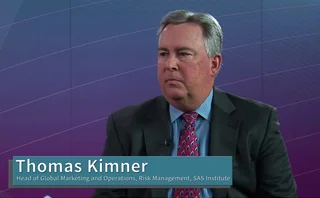
Citi has war chest but high standards, CFO says
Citigroup has “stored excess capital” to allow it to make acquisitions during periods when price-earnings multiples in the financial services industry are depressed, as is currently the case, according to Todd Thomson, chief financial officer at the New York-based financial services giant.
As for Citi’s own valuation, Thomson said its price-earnings ratio is driven by three factors: income growth, stability of income and returns. Currently, he estimates that two-thirds of Citi’s PE is driven by income growth, with the rest accounted for by stability of its income and by its returns. However, this split tends to reverse in times of stress, he said.
Thomson also said that, while economic capital is a useful metric for supporting strategic decision-making, some more complex metrics, especially economic value added (EVA) is not in vogue at Citi. Sandy Weill, Citigroup’s chairman and CEO, believes EVA has led many firms to make a lot of bad decisions, Thomson said. Thomson added that while it has some value, it’s not a substitute for management decision-making. “The more you complicate the tools, the harder it is to tell if managers are doing the right things,” he said.
Only users who have a paid subscription or are part of a corporate subscription are able to print or copy content.
To access these options, along with all other subscription benefits, please contact info@risk.net or view our subscription options here: http://subscriptions.risk.net/subscribe
You are currently unable to print this content. Please contact info@risk.net to find out more.
You are currently unable to copy this content. Please contact info@risk.net to find out more.
Copyright Infopro Digital Limited. All rights reserved.
As outlined in our terms and conditions, https://www.infopro-digital.com/terms-and-conditions/subscriptions/ (point 2.4), printing is limited to a single copy.
If you would like to purchase additional rights please email info@risk.net
Copyright Infopro Digital Limited. All rights reserved.
You may share this content using our article tools. As outlined in our terms and conditions, https://www.infopro-digital.com/terms-and-conditions/subscriptions/ (clause 2.4), an Authorised User may only make one copy of the materials for their own personal use. You must also comply with the restrictions in clause 2.5.
If you would like to purchase additional rights please email info@risk.net
More on Infrastructure
Communications surveillance solutions 2024: market update
A report offering Chartis’ latest view of the vendor landscape for communications surveillance solutions
SIMONE, the AI that nearly took down a bank
An algorithm designed to create new structured products ran out of control last year with almost catastrophic consequences for a major bank, as our exclusive whistleblower account reveals
Revealed: where banks are (literally) warehousing their swaps
As derivatives notional grows, dealers experiment with novel storage solutions
E-trading takes hold for FX swaps – sort of
Bulk of trades are being executed over screen, but bolder changes have stalled
From DNA to DHA – Preparing for a new era of digital human augmentation
As technology increasingly permeates societies, cultures and everyday activities, its integration into people’s lives is having a profound impact on what is expected of people in the workplace. Deloitte examines this evolution of today’s workforce, the…
Risk and finance: Working more closely together
Video interview: Thomas Kimner, SAS
Video interview: Fabio Merlino, Intesa Sanpaolo
Fabio Merlino, head of retail and insurance risk discusses how the wealth management division of Intesa Sanpaolo upgraded its risk analytics capabilities with the algo system used by its proprietary traders
The changing face of Risk.net and our magazines
Extensive reader consultation has helped us reshape editorial teams and our site







